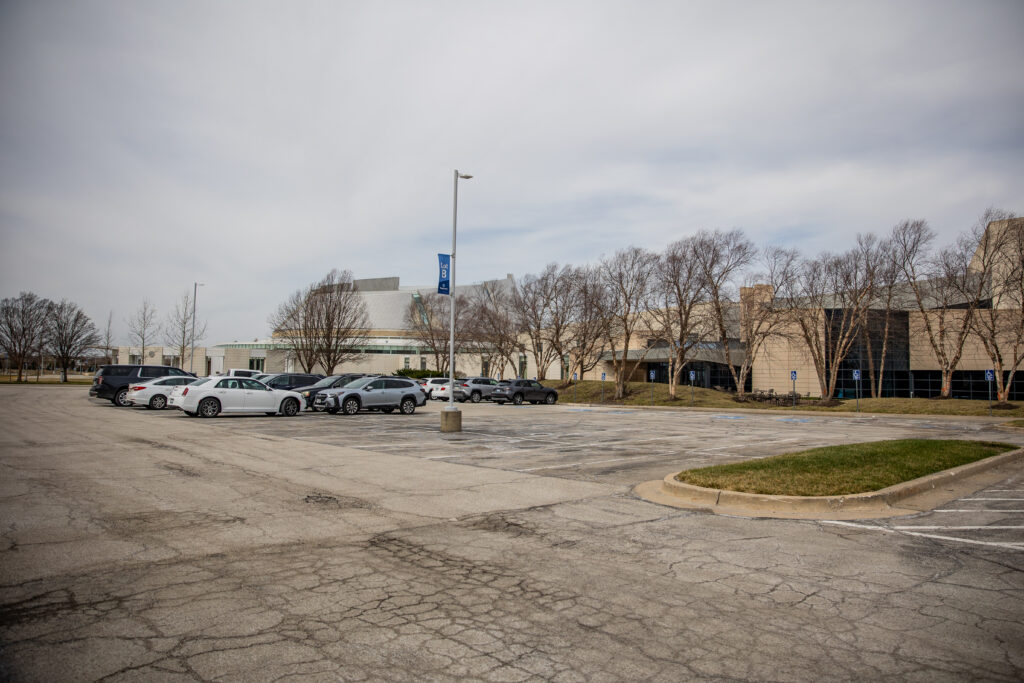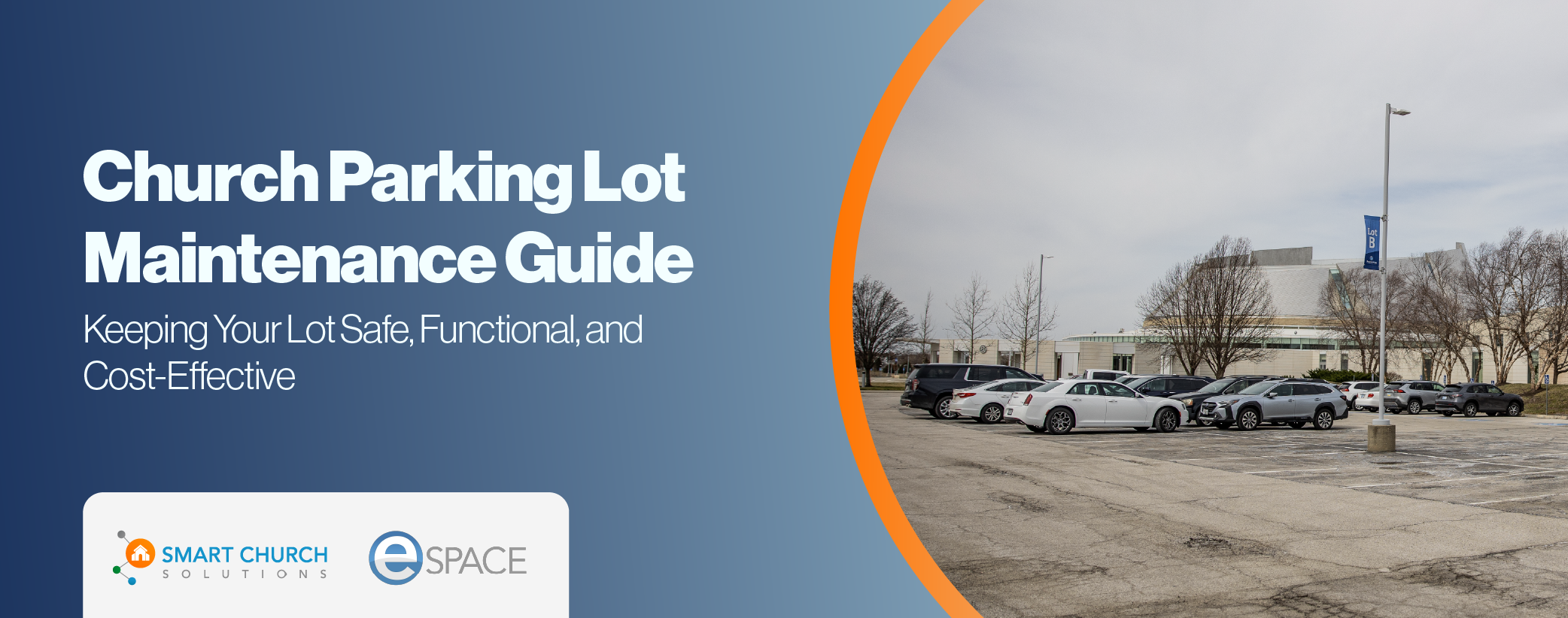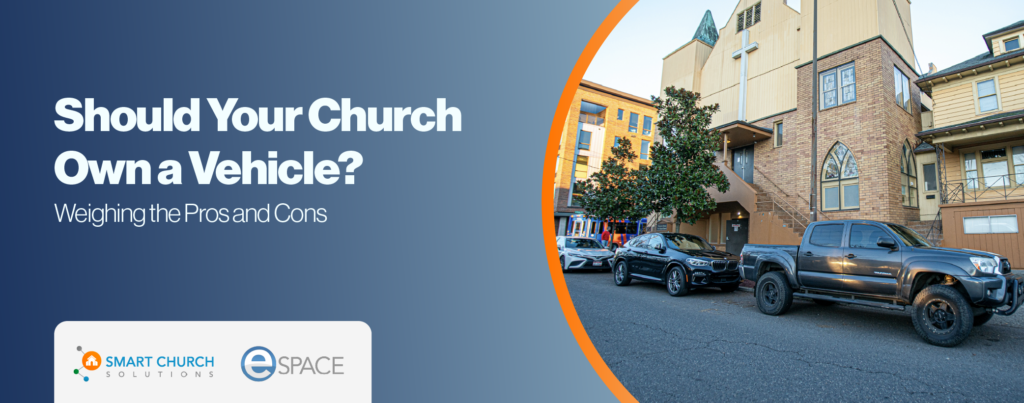A well-maintained parking lot is more than a convenience—it’s a crucial aspect of church operations, safety, and stewardship. Proper care ensures that your parking lot serves its purpose for congregants and visitors, avoids costly repairs, and maintains a welcoming appearance.
In the following guide, we’ll cover best practices for church parking lot maintenance, from routine inspections to dealing with weather-related wear and tear.
Why Parking Lot Maintenance Matters
Your parking lot is one of the first things visitors see, and its condition speaks volumes about your church’s stewardship. Neglecting maintenance can lead to:
- Structural Damage: Small cracks can grow into major, costly repairs.
- Safety Hazards: Potholes and uneven surfaces increase the risk of accidents.
- Drainage Issues: Poor maintenance can lead to standing water and erosion.
- Higher Costs: Delayed repairs often result in more extensive and expensive fixes.
By staying proactive, you can avoid these issues and create a safer, more welcoming space for your congregation.

Regular Inspections: Spot Issues Early
Conduct routine inspections of your parking lot to catch potential problems early. Key things to look for include:
- Surface Color: Light gray or faded asphalt indicates it may be time to reseal. Seal coating adds a protective layer to your parking lot, extending its life.
- Cracks: Small cracks allow water to seep into the substrate, widening over time. Use crack fillers regularly to prevent further damage.
- Alligatoring: A pattern of cracks resembling alligator skin signals significant damage to the substrate. This may require cold or hot patch repairs.
- Drainage Problems: Ensure water flows toward designated drains and away from your lot to avoid pooling and erosion.
Addressing these issues early can extend the life of your parking lot and reduce long-term costs.
Essential Repairs and Upkeep
To keep your lot in peak condition, focus on these key maintenance tasks:
- Crack Filling: Use liquid or hot-melt crack fillers to seal small cracks before they expand.
- Pothole Repairs: For small potholes, use cold patch materials with proper compression. For larger issues, consider hiring a contractor for hot patch repairs.
- Alligator Patches: Apply specialized patches to areas with severe alligatoring to restore surface integrity.
Sealcoating: Protecting Your Asphalt
Sealcoating creates a protective layer against weather and traffic wear. Typically, seal coating should be applied every 2–5 years, depending on climate and usage. Focus on high-traffic areas first, and restripe your lot after sealing to ensure compliance with ADA guidelines.

Seasonal Considerations
Each season presents unique challenges for parking lot maintenance. Stay ahead of the elements with these seasonal tips:
Winter Maintenance:
- Snow Removal: Ensure that snow is plowed without damaging curbs or blocking drains.
- Ice Melt: Opt for liquid ice melt to minimize damage to asphalt and surrounding landscaping.
- Drainage Clearance: Regularly check drains for blockages caused by ice, debris, or snow piles.
Rainy Seasons:
- Debris Removal: Clear leaves, sand, and other debris to prevent clogged drains and surface damage.
- Inspect for Water Intrusion: Look for areas where water is pooling or seeping into cracks.
Managing High-Traffic and Specialized Areas
Certain parts of your parking lot require extra attention:
- High-Traffic Zones: Focus additional maintenance efforts on areas with frequent use, such as school drop-off zones or staff parking.
- Dumpster Areas: Reinforce asphalt near dumpster enclosures with concrete pads to withstand the heavy weight of garbage trucks.
- Accessible Parking: Confirm that accessible routes and spaces meet current ADA standards during maintenance and restriping.
Proactive Maintenance Strategies
Taking a proactive approach will save time and money in the long run. Consider these best practices:
- Schedule Regular Cleanings: Keep the lot free from debris, sand, and organic materials that can accelerate wear.
- Plan for Long-Term Costs: Evaluate your parking lot’s use to determine how often repairs or resealing will be required.
- Collaborate with Professionals: Hire contractors for major repairs and ensure they follow best practices for asphalt longevity.
Enhancing Stewardship Through Parking Lot Management
Maintaining your parking lot is a reflection of good stewardship. It ensures a safe environment for congregants and shows care for the resources God has entrusted to your church. Additionally, maintaining your lot can help reduce liability risks, minimize repair costs, and improve accessibility for all visitors.
Conclusion: A Call to Action for Facility Stewards
Your parking lot is more than just a space to park cars—it’s a vital part of your church’s ministry. By prioritizing routine inspections, proactive repairs, and seasonal maintenance, you can extend the life of your parking lot and ensure it remains safe, functional, and welcoming for years to come. Start implementing these best practices today to be a good steward of your facilities and create a positive first impression for all who visit your church.








